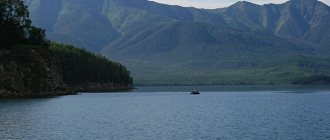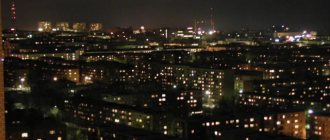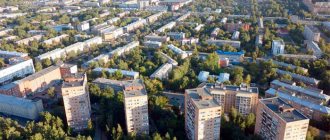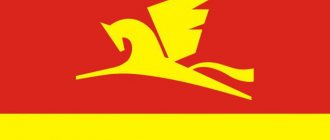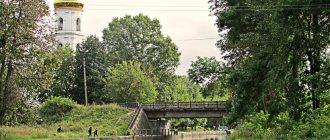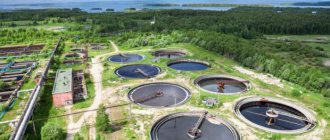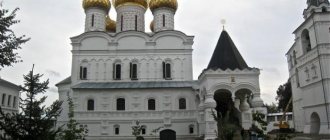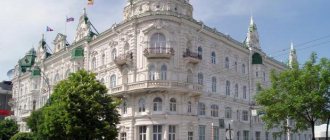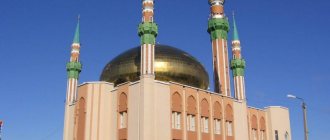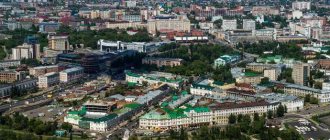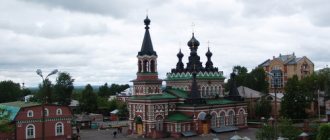Historical information
In Russian chronicles, the settlement has been mentioned since 1469 in connection with the campaign of governor Ivan Runa to Kazan. However, settlements appeared here much earlier, as evidenced by numerous archaeological excavations. Despite some historical facts, 1469 is considered to be the year the city was founded.
The population of Cheboksary began to increase significantly after the 1917 Revolution. New educational institutions and factories began to appear in the city. All this could not help but attract people from neighboring settlements. The birth rate has also increased. Modern Cheboksary is a city that is developing rapidly. The population continues to increase today.
Districts and real estate Cheboksary
Officially, the city is divided into four districts, one of which is located on the left bank of the Volga River and consists of a number of small villages, camp sites, cordons and sanatoriums. Getting there is not very convenient - either by public and private transport via hydroelectric power stations at any time of the year, or by trams and ferry in the summer. You won't be able to swim - it's too far. There is no bridge - it is expensive to build. The remaining areas are separated by bridges. The breakdown in numbers is approximately as follows:
Kalininsky district - 150 thousand, Leninsky -123 thousand, Moskovsky -184 thousand people. The Volga region has about 12 thousand.
Map of Cheboksary districts
As you can see on the map, each of the four districts is divided into several more territories, which, however, bear quite official names. However, this is not all. Each of these districts is still divided into small territories, which received their names in the fascinating and turbulent 90s, when the so-called “boy” groups existed in the city, strictly guarding their halo of habitat. Many of them ceased to exist long ago, but the names remained in the minds of the townspeople. The “boys” have matured, put on suits, ties, some even cufflinks, but they still remember where their homeland is and whose blood they will be from.
The Moscow region is considered the most respectable. At least, the cost of housing here is the most expensive in the city, except for new houses in the center and a number of elite houses in the KhBK area. The average cost of a residential square meter in the Moscow region varies from 35 to 55 thousand rubles. It all depends on the type of building and location. The most expensive squares are in the area of Historical Hill or, as people say, Brick (there is an old brick factory on this territory), as well as in the North-Western microdistrict in the territories called Volzhsky-1, Volzhsky-3 and st. Talvira. The first president of Chuvashia lives here with his former officials, as well as the current nomenklatura fraternity and large businessmen.
New buildings in the Moskovsky district
There is a small village with large cottages called New Village. The cost of a land plot of 15 acres can reach up to 35 million rubles. The area of the former hippodrome, now the intersection of Moskovsky Prospekt and st., is also considered prestigious. Afanasyeva. There is practically no industry in the Moscow region, with the exception of the instrument industry, which produces units for avionics. The plant not only remained afloat, but also successfully replenishes the city’s treasury.
As for other parts of the region, they are significantly inferior in prestige to the North-West. True, it is worth noting that the South-Western region is distinguished by fairly decent houses in architecture and layout. However, the distance from the center and the Volga makes housing relatively inexpensive. About 30-35 thousand per square meter. Young families live here who have taken out a mortgage and are successfully paying for it. And also businessmen who managed to earn money for a two- or three-room apartment in two or three years. The place is quite comfortable.
As for the Chapaevsky village, it is a very interesting place. Built around the plant. Chapaev, he preserved the amazing atmosphere of provincial architecture. Many of the houses were built by German prisoners of war, which makes them incredibly cute. Everyone here knows each other. There are many elderly people who take special care of their flower beds and front gardens. Old engineers and designers who settled in the city after the construction of the plant began live here. They love and value their area. However, this area is popularly called the Village. The most desperate bandits and hooligans were from here. The city at one time was in awe of the “villages”.
Chapaevsky village
Leninsky district is a rather motley sight. The Center microdistrict is Karl Marx Street with administrative buildings and Republic Square, as well as the pearl of the city - the Bay - beautiful, clean and green.
Leninsky district
Everything else is essentially a ghetto. Bogdanka is an old two-story barracks, with amenities on the street and wood sheds, which are used both as warehouses and for their intended purpose. The only area in the city where you don’t want to not only live, but also just stop by on business. And there can be no business there. The road to the main city cemeteries runs through Bogdanka.
Dilapidated houses are a common sight on Bogdanka
True, the city has a development plan for this area. New houses began to appear, infrastructure was developing. People are waiting for changes and rejoicing at the emerging prospects.
Geographical center of the city
As for the Kalininsky district, it also consists of sectors with different quality of life.
The KhBK microdistrict is considered one of the most prestigious. This is due to both the location and those who settled here. Directors of large factories - active and not so much, ministers, the new head of the Republic, they all live next door. We can say that this is the cleanest and most well-groomed area of the city. Evenly trimmed linden trees, beautiful flower beds, repaired roads, constant lighting - all this pleases the inhabitants of the area. It should be noted that some of the houses here resemble the Chapaevsky village in their architecture, only they look like the houses of a German suburb - picturesque and alluring. Very good area. And since, thanks to the activities of the former president, the Cotton Mill ceased to exist, next to the area there is one of the largest shopping centers in the city, Mega Mall, located in industrial buildings.
But the most important attraction of the area is Victory Park. Blue spruce trees and an unforgettable view from the highest point of the city allow the inhabitants of this closed little world to enjoy peace and well-being.
View from Victory Park
Perhaps the most expensive real estate is here. Some apartments cost about 12-15 million rubles. True, their area is corresponding from 150 to 350 square meters. There are also small apartments. They are much cheaper. But it is extremely difficult to buy housing here.
Not far from this oasis of well-being are the districts “Chulochki” and “Agregatki”, in other words, the districts formed thanks to the Hosiery and Knitting Factory and the Aggregate Plant. These are working-class areas. Living here is not prestigious, but it is inexpensive. The bulk of visitors from villages settle here. It was so 40 years ago, and it is so now. The houses for the most part are brick buildings of 4-5 floors from the Khrushchev period of our history. There are many hostels built for working youth, who, having matured significantly, stayed to live here. A lot of everyday alcoholism and family dramas. However, children are having fun in the courtyards. The neighborhoods are noisy and fun. It is here that all the local district punks fear the watchful old women who stand guard over public and personal morality.
As for the New South district, it is the largest and most populous in the entire city.
Novo-Yuzhny
Built for the workers of the Tractor Plant, the area began to grow rapidly. Initially, young and not very specialists who came from all over the USSR lived here. They brought the wind of freedom, glimpses of a new mind, the smell of unprecedented dishes and forbidden literature. Engineers, chemists, metallurgists and techies, so attractive in the seventies, have firmly established themselves in this young part of the city. As time went. The plant needed a lot of new labor, and the area acquired new residents. The same young, as strong and healthy workers as the first wave of migrants. But they spoke mostly Chuvash and did not know who Feuerbach was. But they knew that the plant would certainly provide them with housing and good wages.
And the Tractor Plant did not deceive them. New houses were built, wide avenues ran through, and infrastructure was developed. Today's New South district is an area of fast monolithic houses, not very expensive shops and an incredible number of residents. Inexpensive, fun, noisy. As a rule, residents living here, when going to the Center or the North-Western region, notify their family, saying that they are “going to the city.”
Physiographic indicators
It is no coincidence that the first settlements appeared near the modern city of Cheboksary. The city is located on the Volga Upland, in close proximity to the Volga River reservoir. The total length of the city's borders exceeds 80 kilometers. The total area of the settlement is 233 square meters. km. 24% belongs to the forest fund. The environmental situation in Cheboksary is considered satisfactory. And this is another factor in the rapid population growth.
The city's topography is characterized by the presence of a large number of ravines. The height above sea level varies from 50 to 20 meters. Several rivers flow through the city. In this regard, there are several bridges in the village.
Cheboksary is characterized by a temperate continental climate. Winter here is usually long (more than four months). From December to January, snowy and frosty weather prevails. The summer months are not characterized by abnormally high temperatures. August is the hottest. At this time, the air temperature can rise to 35 degrees Celsius.
City information
Cheboksary is the capital of the Chuvash Republic. Located in the west of the Russian Federation. Located on the right bank of the Volga River. The economy is represented by enterprises in the engineering, metalworking, textile, military, and food industries. There are trading and service companies operating.
Near the settlement there are federal highways: M7 “Volga”, P176 “Vyatka”. The main railway line runs through. There is a civil airport of the same name. There are vocational educational institutions, universities and their branches. The population is more than 470 thousand people.
Population
As of 2022, the population in Cheboksary is 489,498 people. According to this indicator, the city is in 38th place in Russia. However, such a number of people did not always live in the settlement. Rapid growth has been observed since 1917. According to data for 1913, only 6,700 people lived in the settlement. Already in 1926 the figure increased to 9 thousand people. A real demographic boom was observed from 1959 to 1967. During this time, the population growth amounted to about 100 thousand people. The number of people living in the city continues to increase today. The birth rate significantly exceeds the death rate.
The national composition of Cheboksary deserves special attention. More than half of the population are Chuvash (about 62%). The Russians are in second place. In addition, Ukrainians, Poles, Germans, Tatars, Gypsies, Belarusians, etc. live in the city.
Crime
It’s strange, but Cheboksary has always been a fairly calm city. Yes, of course, there is robbery and murder, but they are usually of a purely domestic nature. Drunken kitchen quarrels and fights can end disastrously. But there is no rampant crime in the city. Such a popular system of the 90s as “protection protection” for businesses was practically absent in the city. The capital of Chuvashia lived peacefully and calmly. Well, of course, “district-to-district” showdowns were popular among the younger generation, when crowds of hundreds flocked to a meeting somewhere. However, there were always no deaths. Fights, yes, but not to the death. They were probably afraid. The townspeople have always had a strong belief that the police bravely protect the peace and well-being of people. Maybe because every 10th resident of Cheboksary was involved in law enforcement agencies. The statistics remain to this day.
What our wonderful city has become famous for is its regular economic criminal cases against the heads of large enterprises, plants and factories. Moreover, they were initiated by the former head of the republic, the former Minister of Justice of the Russian Federation. Cases were opened against almost each of the leaders, some were imprisoned, others had already been released. It all started with attempts to declare the privatization of enterprises illegal, then, according to a well-established scheme, the organization was seized, an external manager was appointed, assets were withdrawn and the vacated land and buildings were sold. The very first high-profile case was the collapse of KhBK. And then came the resale of the remaining enterprises. And so, the city is calm, in the evenings there are police patrols, even without dogs, and you won’t even hear the rustle of a flying bullet. Boring, quiet, splendid.
Administrative structure and authorities
The city includes three administrative districts - Moskovsky, Leninsky and Kalininsky. The population of Cheboksary cannot be considered without taking into account the administrative features of the city. The largest is the Moskovsky district. More than 200 thousand people live here. It is here that the largest industrial enterprises are concentrated, so the environmental situation is not the best. Kalininsky district covers the eastern part of the city. About 156 thousand people live here. The area is characterized by well-developed infrastructure. The Leninsky district is the smallest in terms of population. 134 thousand people live here.
The head of executive power in Cheboksary is the mayor. He is elected in municipal elections. Another important formation of city government is the city meeting of deputies. It is this body that regulates the economy of Cheboksary. In addition, decisions regarding the education and health of the local population are made at the meeting.
Economy and industry
The city's economy is rapidly developing due to the presence of a large number of large industrial complexes. Much attention is also paid to trade and services.
A lot of good reviews can be heard about the Cheboksary Industrial Tractor Plant, which began its work in 1972. Today the plant is one of the largest industrial complexes in the world engaged in the production of bulldozer equipment. Most of the products are exported. The Cheboksary Hardware Plant, as well as the Electrical Instruments Plant, also operate in the field of mechanical engineering.
It is no coincidence that Cheboksary is developing. Huge attention is paid to industry. In the village there is a hosiery and knitting factory, a cotton mill, and a ribbon weaving factory. There are also many achievements in the food industry. The products of the Cheboksary confectionery factory "Accord" are known throughout Russia. The establishment has been delighting with its delicious products since 1943. There is also a pasta factory and a distillery in Cheboksary.
Climate and ecology Cheboksary
Well, what can you say especially about the climate of the middle zone? In winter it is cold and snowy. The winds in the city are not very strong, with the exception of the northwestern part of the city. According to rumors and urban legends, there is some kind of tectonic fault there. No one can say how this affects the strength of the wind, but the winds there are really strong. Despite this, the area is considered prestigious, so wealthy and influential people live there.
The air in the city is characterized by humidity, due to the fact that Cheboksary is located on the very bank of the Volga. This closeness is especially felt in the spring, when the river is freed from ice. The average temperature in winter is 15-18 degrees. It can, of course, get colder. City chronicles remember 1977, when the temperature dropped to -45. Pipes and radiators burst, birds and apple trees froze.
Winter Cheboksary
But in the summer the climate in the city changes to mild and warm. A large number of green spaces, such as parks, gardens, squares and forests, create enough shade in the capital of Sunny Chuvashia and enrich the city with oxygen. And again, the Volga saves the townspeople from the hypothetically possible heat. The average temperature in summer is 21-25 degrees.
About 15 years ago, Cheboksary was considered an industrial city. The huge Cotton Mill, the Aggregate and Tractor Plants, Elara, Energo-Zapchast and several other large industrial complexes worked at full capacity, enriching the atmosphere with useful and necessary elements for which the table named after them is so famous. Mendeleev. Now there are only a few factories left that are not operating at full capacity, so the air in the city has become clean and transparent. And it even smells like linden trees in spring and pine needles in summer. True, sometimes at night the city guards of the Aggregate Plant still delight the city, reminding us of the former greatness of the industrial city with the smell of hydrogen sulfide. And even then, it only goes to the adjacent block and not every week.
Cheboksary CHPP
In the neighboring city of Novocheboksarsk there is still Khimprom, a large and large plant. However, the wind rose directs all possible flows of life of this plant towards the Mari Republic. So, they say everything is safe and clean. All the townspeople believe this.
What else the region is famous for is the Cheboksary hydroelectric power station. There is a lot of gossip about how it has not been operating at full capacity since its founding. They will raise the water level to the proper level. There will be a lot of fish, clean water and flooded forests. The view from many city windows will clearly improve, as the forest horizon will move a couple of kilometers away, and the river waters will be covered with snow-white sails of elegant yachts. It will be very beautiful.
Yes, however, even now the city is distinguished by its cleanliness and improvement. In 2001, the city was recognized as “The cleanest and most comfortable city in Russia.” Mayors have been diligently maintaining this state for the last 10 years. But the city was no longer given bonuses.
Transport
The population of Cheboksary is considerable. It is no coincidence that the transport sector is well developed here. There is a river port, a railway station, and an airport. From the locality you can reach many Russian cities without transfers. The road network is also well developed here. More than 80% of all cargo transportation is carried out by road transport.
There is a high-quality railway connection from Cheboksary to Moscow. Walks on a regular basis.
Urban transport is also well developed in the village. The Cheboksary trolleybus first began operating in 1964. Then transport ran from the railway station to the city's Red Square. There are now more than 20 routes. The fare is 18 rubles. There are also regular buses and minibuses in the city.
City infrastructure
Talking about urban utilities is always difficult. And the complexity here does not lie in the diversity and versatility of the system. It all depends on what area you live in. The prosperous North-Western and Central regions and their inhabitants will say that the city is good for everyone: clean, comfortable, well-groomed. There are many kindergartens and schools, hospitals are working properly, the post office and telegraph office are not occupied by anyone, garbage is removed ahead of schedule, entrances are washed and repaired in a timely manner, trash cans are everywhere, bus stop pavilions are made of glass, there are flowerpots and beautiful flower beds on the streets that are constantly are being renewed, and on Mars the time for apple and cherry blossoms is about to begin. In a word, the city is a dream and the Pearl of the Volga region. And the price of utility services provided to prosperous residents of prosperous areas, of course, is not the cheapest, but they are worth it. They really are worth it.
Flower fish
If you live in a different area, then the problems undoubtedly increase. Snow removal in winter is not so good, entrances and courtyards are not cleaned as well, there are problems with kindergartens, the cost of utilities is high, trash cans are not every 30-40 meters, but every 60-70. Management companies periodically try to increase tariffs unilaterally.
Spring thaw on the roads
The roads are broken and garbage is not always removed on time. The average cost of utility bills is about 3 thousand rubles for a three-room apartment. This includes heating, water, electricity and other expenses. In some areas this price is slightly lower, and in some it exceeds 6-7 thousand. But, in fairness, let’s say this amount will be paid by the owners of fairly large apartments, with an area of 100 square meters. m.
Cheboksary Stalinka
However, all citizens will undoubtedly note the fact that the city has no problems with heating, hot or cold water supply, or power outages. Of course, there are emergency shutdowns, but the city service 074 works extremely quickly. Any malfunction is eliminated within a few hours. Maximum day. With the exception of planned repairs, about which residents of neighborhoods are notified several days in advance. The credit for such well-functioning work of the housing and communal services lies with the two previous mayors. One was engaged in the external improvement of the city, and the second changed everything that was hidden underground - that is, communications. There have never been emergency or rolling heat outages in Cheboksary during the winter. The city is almost completely illuminated.
True, there is a big drawback in the city economy - transport does not work around the clock. This greatly angers the townspeople who have gone on a spree. After one in the morning you have to call a taxi. Both buses and trolleybuses, as well as minibuses, stop running. Apparently the drivers decide that respectable citizens need to be at home at night. Very, very inconvenient installation.
Universitetskaya Street
There is also a serious problem in the city. The central part of Cheboksary was built without taking into account the increase in the welfare of citizens and the development of a bank lending system. The city planners of the twentieth century did not take into account that the city would have so many personal vehicles. They didn’t think about the future development of the domestic and world automobile structure. Therefore, there are few car parks and car parks in the center. And some of the highways and interchanges are too narrow. This creates traffic jams in the central part of the city, through which all major traffic flows pass. Authorities are trying to find solutions, laying out detour routes and even building new roads. But, alas! Cheboksary is located in a ravine area and all districts of the city are connected by bridges, which does not allow the expansion of the roadway. Therefore, traffic jams are still inevitable. Well, the road surface itself causes a lot of complaints from drivers. The asphalt is of very poor quality. Although a road repair program was launched in 2010. Some of the main highways were repaired.
New Roads
Cheboksary residents are in anxious anticipation of a miracle. They write letters to the administration, intrigue, tell sad stories of personal destinies, demanding the repair of exactly those roads that correspond to individual routes. In general, they live life to the fullest.
As for kindergartens and schools. The demographic crisis that arose in the 90s significantly reduced the population’s need for kindergartens. Everything seems to be fine with the schools. But the garden buildings and nurseries were sold by enterprises that could no longer afford to maintain half-empty buildings. Now that young families have embraced the baby boom idea, the demand for kindergartens has grown enormously. But it should be noted that through the efforts of the authorities, 6 kindergartens have been built in the city over the past few years.
Education
There are more than 30 general education institutions in the city, and many public and private kindergartens. The problem of placing a child in a preschool institution is not acute in most families. However, in order to get into a specific kindergarten, you must join the electronic queue.
Great attention is paid to the employment of the population of Cheboksary. It is no coincidence that the administration fully supports higher educational institutions, where students are trained in various professional areas.
A lot of good reviews can be heard about the Chuvash State Institute of Culture and Arts. This budget educational institution was founded in Cheboksary in 2000. Nowadays, guys who want to become directors, actors, vocalists, choir directors, etc. can undergo training here.
Chuvash State Pedagogical University produces professionals in the educational field. The institution was founded in 1930. Not only children from Cheboksary, but also residents of neighboring regions are trained here.
Culture Cheboksary
The city has many interesting attractions. Tourists should definitely visit the Chuvash National Museum. This cultural and educational institution was founded in 1920. The following collections were formed in the museum: archaeological, botanical, documentary, ethnographic, etc. From the exhibitions you can learn how the city developed over the years.
The Chuvash Art Museum may also be of interest to tourists. Here are the works of local artists who lived in the city during different periods. It is also recommended to visit: the Museum of Chuvash Embroidery, the Literary Museum named after K. V. Ivanov, the Chuvash State Opera and Ballet Theater, and the State Philharmonic.
Cheboksary
The Republic of Chuvashia and Cheboksary in particular is a very multifaceted tourist destination. In the capital of Chuvashia, you can spend time both actively and intensely, as well as peacefully and contemplatively. To discover the city from different sides, use our list of “10 things to do in Cheboksary.”
View of Cheboksary from the water
© turandota
Walk along the longest light bridge in Russia . The light bridge across the Cheboksary Bay is 320 meters long. In the evening, more than 70 thousand light bulbs are lit on the bridge.- Look at Cheboksary from the water . Pleasure boats along the Volga depart from the River Port, lasting 1–2 hours.
- Make a wish on Chuvash runes . The monument “Symbol of Wisdom” in the form of a granite slab with runes is the most interesting thing on Red Square in Cheboksary. You need to choose a rune that matches your desire, and, after rubbing it, make a wish.
- Take a photo against the background of the Chuvash analogue of the Brazilian statue of Christ the Savior . The Patroness Mother monument, standing on a hill above the Cheboksary Bay, is the visiting card of the city. Tourists love to take pictures against the background with their arms outstretched.
- See the city from above . The Ferris wheel on the embankment in Cheboksary takes visitors to a height of 46 meters. You will see the entire historical center, the bay and the Volga.
- Visit the beer museum with tasting. Most tourists agree that this is the most interesting museum in the city. Only here you can try a rustic foamy drink brewed according to ancient Chuvash recipes.
Shartan© Victor Bashkir
- Take a walk along the Chuvash Arbat . Merchant Efremov Boulevard is a pedestrian street with sculptural compositions, ethnic restaurants and old mansions.
- Try the Shartan meat ball straight from the oven . One of the most unusual dishes of Chuvash cuisine is a sheep stomach with lamb meat and spices inside.
- Bring ethnic souvenirs : dishes, accessories with ornaments or decorations in ethnic style. Chuvash folk style looks very original. Among the souvenirs you can find options for every taste - from kitchen utensils to fashionable shoppers.
- Visit the southern taiga forest . In the Prisursky Nature Reserve you can walk through well-preserved southern taiga valley forests and see concentrations of rare waterfowl.
Guide
It is interesting to get to know the city from the point of view of different historical eras and personalities. More than a dozen excursion routes have been developed in Cheboksary - from a large introduction to all the important tourist sites of the city to thematic ones dedicated to eminent merchant families or the main temples of the city.
Route 1: Along the water
The Volga and Cheboksary Bay are favorite places for citizens and tourists. Everyone in this city is drawn to the water. In addition, the most interesting sights of Cheboksary are concentrated here. Start the route from the River Port and then move to the ancient Church of the Resurrection. Further along the route you will visit:
- Assumption Church
© Marina Stepanova
National Museum of Chuvashia . The museum is located in the beautiful mansion of the Efremov merchants. You can limit yourself to an external examination, or you can examine the rich collection dedicated to the history and nature of Chuvashia. - Cheboksary Bay . The Light Bridge offers views of many of the city's sights. The monument to the Patron Mother looks especially impressive. Walk up the steps to it and take a photo in front of the background with your arms outstretched.
- Moscow embankment . The central recreation area is a pleasant place for both walks and picnics. Here you can rent a bike, have a snack or relax on the beach.
- Trinity Monastery . One of the oldest monasteries in the Volga region was built during the reign of Ivan the Terrible. The holy monastery looks very poetic against the backdrop of the Volga landscapes.
- Assumption Church . The blue and white temple, which goes so well with the colors of the sky and the Volga, would have been built in the 18th century.
From the Assumption Church, return to the River Port - if your time in Cheboksary is limited. In front of the port there is a company store of the Akkond confectionery factory - you can take sweet souvenirs on the road.
Route 2: Cheboksary merchants
House of Mikhail Efremov - now the National Museum of Chuvashia
© miljkovic14
The route is built along architectural monuments that were left behind by the most eminent merchant family of Cheboksary - the Efremovs. Start your walk on Kompozitorov Vorobiev Street. House 10 in the Art Nouveau style was built in 1910 for Nikolai Efremov. Now the building of the Chuvash National Congress is located here. Next, turn onto Cheboksary Arbat - Kuptsov Efremov Street. Pyotr Efremov previously lived in the building of the current museum of military glory. The stone two-story mansion was built in 1884. In addition to the museum, the mansion houses a restaurant serving Chuvash cuisine. The third mansion on the route is the house of Mikhail Efremov. Now the huge building is occupied by the National Museum of the Republic.
Walk along the embankment of the Cheboksary Bay past the Assumption Church and the Trinity Monastery to the Art Museum. An elegant and sophisticated house of complex design belonged to Fedor Efremov before the revolution. Inside, the interiors with decorative stucco molding and ceiling paintings have been partially preserved. The final point of the route is the tomb of the Efremov family. You will need to walk along the entire Cheboksary Bay to the Spaso-Preobrazhensky Monastery. On its territory until 1918 there was a burial vault of the Efremov family. Now this is the parish church of John of Kronstadt - a picturesque monument of Russian classicism.
In detail: What to see in Cheboksary in a day
Event tourism
Cheboksary is deservedly considered one of the largest cultural centers of the Volga region. Throughout the year, international cultural festivals, colorful and original ethnic holidays, as well as sports competitions take place here. When going to Cheboksary, be sure to check the holiday calendar. The most complete one is on the tourist portal of the city of Cheboksary.
© Natalya Moiseeva
The Chuvash Music Festival is held in February at the Chuvash State Opera and Ballet Theater. The festival program includes opera and ballet performances based on the works of Chuvash authors. The productions are very original and unique.
The International Ballet Festival also takes place at the Opera House in the second half of spring. At this time, you can see classical ballet performances from participants from different countries.
The Operetta Festival is another cultural event of the opera house. It takes place annually in May. The gala concert with legendary arias from various operettas is especially large-scale.
The All-Chuvash festival “Akatuy” is held in many localities of the republic. The main events take place on Red Square in Cheboksary. Akatui has long been celebrated as the time of the end of sowing. The holiday is accompanied by dances and songs, sports competitions and folk festivals.
The Cheboksary International Film Festival takes place annually in the first half of summer. As part of the film festival, you can attend private screenings of films from different countries.
The International Fireworks Festival is one of the most grandiose and spectacular events in Cheboksary. Over the course of two days, teams from different countries perform pyrotechnic shows accompanied by musical accompaniment. At the end of the second day there is a gala show.
© Anastasia Vasilyeva
The All-Russian festival “Turks of Russia” is held in the second half of August. As part of the festival, a fair of folk crafts is organized, colorful performances by representatives of various Turkic-speaking peoples, master classes and sports games are held.
The interregional historical festival “Shadows of Our Ancestors” takes place in the Cheboksary region, in the village of Maly Sundyr. The festival is dedicated to the historical period of the 9th–10th centuries and the events that took place at that time on the Great Volga Route. Reenactor clubs represent squads of Ancient Rus' and Volga Bulgaria, master classes on ancient crafts, as well as stylized shows are held.
The SUP-day festival is held on July 1 on All-Russian SUP Day. Athletes set off along the Volga in fancy dress. Anyone can take part in the parade.
The Strawberry fields festival is dedicated to urban culture. It is held in early July. Youth musical groups from Chuvashia and other regions of Russia perform at various venues. Master classes and lectures are held for guests. There is a food court area in the open air.
The electronic music festival “Sursky Dawns” takes place in June at the recreation center of the same name. Several dozen DJs and musicians perform on the right bank of the Sura River. Guests can stay in a tent or cabin at the base.
“Sursky Rock” is a Chuvash heavy rock festival. It runs 67 km from Cheboksary, near the M7 federal highway. Musicians and bikers gather in the open air on the banks of the Sura. A tent camp is set up with musical evenings around the fire, after the main concert program.
International Opera Festival named after. M.D. Mikhailova takes place at the end of the year: in the second half of November and early December. The festival is named after the famous native of Chuvashia, the bass of the Bolshoi Theater - Maxim Mikhailov. As part of the festival, world opera stars perform on the stage of the Chuvash Opera and Ballet Theater.
Seasonal holidays
The most popular period for holidays in Cheboksary is summer. Tourists strive to see the city in the warm season, not only to take long walks in comfort, but also to relax in nature. Although in other seasons there are many activities in the city and its surroundings for tourists with different interests.
Winter
Snow-covered Cheboksary, hilly and with many churches, looks fabulous in winter. The Volga is covered with ice, New Year's markets take place in the squares, and the city is buried in festive illumination. The New Year celebration is carried out at 6 main sites: Moskovskaya Embankment, Lakreevsky Forest, the site at Shupashkar, Nikolaev Park, the Amazonia ethnocomplex, Doriss Park.
Boulevard of Merchant Efremov in winter
© Victor Bashkir
In winter, the largest outdoor skating rink in Chuvashia with an area of 6 thousand square meters is opened in the Amazonia Park. There you can also go skiing, snowmobiling, snow tubing, or horse-drawn. From the 20th of December and throughout the New Year holidays, the residence of Cheboksary Father Frost operates in “Amazonia”. In the Children's Park named after. Nikolaev opens a small skating rink and equips a slide for cheesecake skating. There are also slides for skiing in the Lakreevsky forest. In Doriss Park, in addition to the skating rink, there is a Christmas market, where you can treat yourself to aromatic mulled wine, hot tea and pancakes. On Moskovskaya Embankment you can ride a dog or horse sled, snowmobile or banana boat. A ski track is being built along the frozen Volga, and you can also ride along the Volga on a winter bike.
In Cheboksary and the surrounding area there are several slopes for skiing and snowboarding, which are suitable for both beginners and professionals. Within the city, the most popular skiing spot is the 150-meter-long slope near the Government House. Every year, freestyle snowboarding enthusiasts set up their own springboards to perform tricks. Near the village of Zaovrazhny there is a longer and wider slope. A full-fledged ski complex, “Vertical”, is located within the city limits, in the area of the eternal flame. “Vertical” has a rope tow and two slopes of varying difficulty (the length of the slope is about 400 meters). Outside the city you can go skiing (the slope is suitable for experienced skiers) and Sviyag (4 slopes ranging from 700 to 1100 meters).
Spring
Full spring begins in Cheboksary in the second half of April - when the last snow melts. But cold periods with strong winds and wet snow are possible until the beginning of May. Navigation along the Volga usually starts on the May holidays. The second half of spring is the time of festivals in Cheboksary. At this time, it is worth visiting the ballet festival or operetta festival at the Chuvash Opera and Ballet Theater. And on fine days in May, you can go into nature - to one of the Cheboksary parks and to protected areas in the vicinity of the city. In the second half of May, the rafting and hiking season opens.
Summer
Fountain in the River Port
© Natalya Moiseeva
The swimming season in Cheboksary opens in the second half of June and early July. You can relax on the beach without leaving the city. The central beach of Cheboksary is located on the Moskovskaya embankment. It is well equipped and divided into several zones: children's, sports and recreation areas. The beach has showers, sun loungers, drinking fountains and fast food stalls. Afanasyevsky and Novoselsky beaches are also located on the Moskovskaya embankment, but further from the center. Accordingly, the beaches are freer. The Left Bank beach is located opposite the Central one. It is also well equipped, but due to the distance it is better to come to Levoberezhny for the whole day. The beach offers beautiful views of the city and the air is fresher here. Entry into the water is smooth, perfect for families with children. A cozy beach with a cafe and music is located on the territory of the Sunny Beach sanatorium. Visiting is free, but motorists must pay an entry fee. One of the most naturally beautiful beaches is located on the territory of the Chuvashia sanatorium: surrounded by pine forests and without unnecessary traces of civilization. It’s also nice to come here on a cool day for a picnic.
Summer fun on the Volga
© Igor Butyrskii
You can go on a boat trip on a river bus or on individual floats. You can rent a boat or catamaran on Cheboksary Bay. You can also do several types of surfing on the Volga: on a paddle board (SUP surfing), with a large towed kite (kite surfing), on a board with a sail (windsurfing). A large surf station is located on the left bank of the Volga, another surf sport is open on the Moskovskaya embankment. Tourists mainly go rafting on the Bolshaya and Malaya Kokshaga rivers.
There are plenty of beautiful natural places in the vicinity of Cheboksary. You can go on a day trip or a multi-day hike. Among the top places worth visiting: Sovereign Hill with a view of the Volga and the cozy town of Mariinsky Posad; Cape Bird's Flight - the highest point of the Republic of Chuvashia; Mokrinsky railway bridge-viaduct; National Park "Chăvash Varmanӗ"; The Silver Cascade waterfall is the highest in the region.
Autumn
In September, the weather in Chuvashia is mild and not hot. This time is equally suitable for hiking and country trips, as well as for long walks around Cheboksary with picnics in picturesque parks with golden foliage. On warm days you can still enjoy water sports, cycling or river transport. Navigation on the Volga officially stops at the beginning of October. But, if the weather is good, you can rent a boat or catamaran until the middle of the month.
When visiting Cheboksary in the second half of autumn, be prepared for chilly weather with rain, strong wind and snow. This time is worth dedicating to getting to know the city’s museum collections and tasting Chuvash cuisine. And in the evenings, organize a cultural program for yourself in the colorful theaters of the city with performances based on Chuvash works and local epics.
Party places
Cheboksary is a modern city with bars and clubs for every taste. Organizing an evening out here is quite easy. You can try signature cocktails and see an unusual presentation of familiar drinks at the 1935 bar. On weekend evenings, the bar hosts musicians and DJs. For quality beer and beer cocktails, head to the William and Kate pub. More than a hundred varieties of craft beer are available at the “Boroda” establishment. The best burgers are prepared here. You can listen to live performances by musicians from folk to rock in the loft bar “Archive”.
For noisy youth parties with electronic music, go to JoJo Bar. The main audience at the Cosmos club is over 25 years old. This is one of the most popular night spots in the city. You can dance in the open air on the banks of the Volga in the summer restaurant “Deck” on the territory of the River Port. On the Historical Embankment, discos are held in the Zaliv cafe during the warm season. Karaoke lovers should go to the Underground karaoke club.
Vacation with children
After seeing the top sights of Cheboksary, go with your children to explore the other side of the city. The most popular place for family recreation in nature is the Amazon Park. The park has 16 attractions, and in winter there is a skating rink and snow tubing slides. In the summer, an aqua zone with a swimming pool is open in “Amazonia”. The Lakreevsky Forest also has attractions for children of all ages, a climbing wall and rope park, laser tag and paintball areas. There are also several attractions in the children's park named after cosmonaut Nikolaev. There is also a planetarium where they show animated films about space. Recently, an interactive complex UP-GYM opened in the Children's Park, which offers electronic games for attentiveness and memory development. Also in the Nikolaev park there is a zoo "Ark" with waterfowl, raccoons, camels, deer and rodents.
Drama Theater
© Victor Bashkir
In the western part of Guzovsky Grove there is the largest rope park in the city - “BeLka Park”. For children of different ages there are 5 tracks with a height of up to 15 meters and a wide variety of stages. In another part of the Grove there is a smaller rope park, “Prostopark”.
Creative master classes for children are held at the Children's Museum Center at the museum and exhibition complex. In the museum center, children are taught how to draw and make crafts from felt and folk dolls from fabric. In the museum of Chuvash embroidery, children will be taught this original art. An animation master class can be taken at the BRIO Animation Studio.
Cultural leisure for children can be organized in one of the Cheboksary theaters. The repertoire of the Chuvash State Puppet Theater includes more than 60 performances for children of different ages. Productions based on the works of Chuvash authors are especially interesting. The Theater for Young Spectators stage performances based on favorite fairy tales and Russian classics. With school-age children you can go to the Chuvash or Russian drama theaters. The repertoire of the Chuvash Opera and Ballet Theater also includes productions for children: “Twelve Months”, “Musicians of Bremen”, “The Frog Princess” and others.
Detailed material: Where to go with a child in Cheboksary

